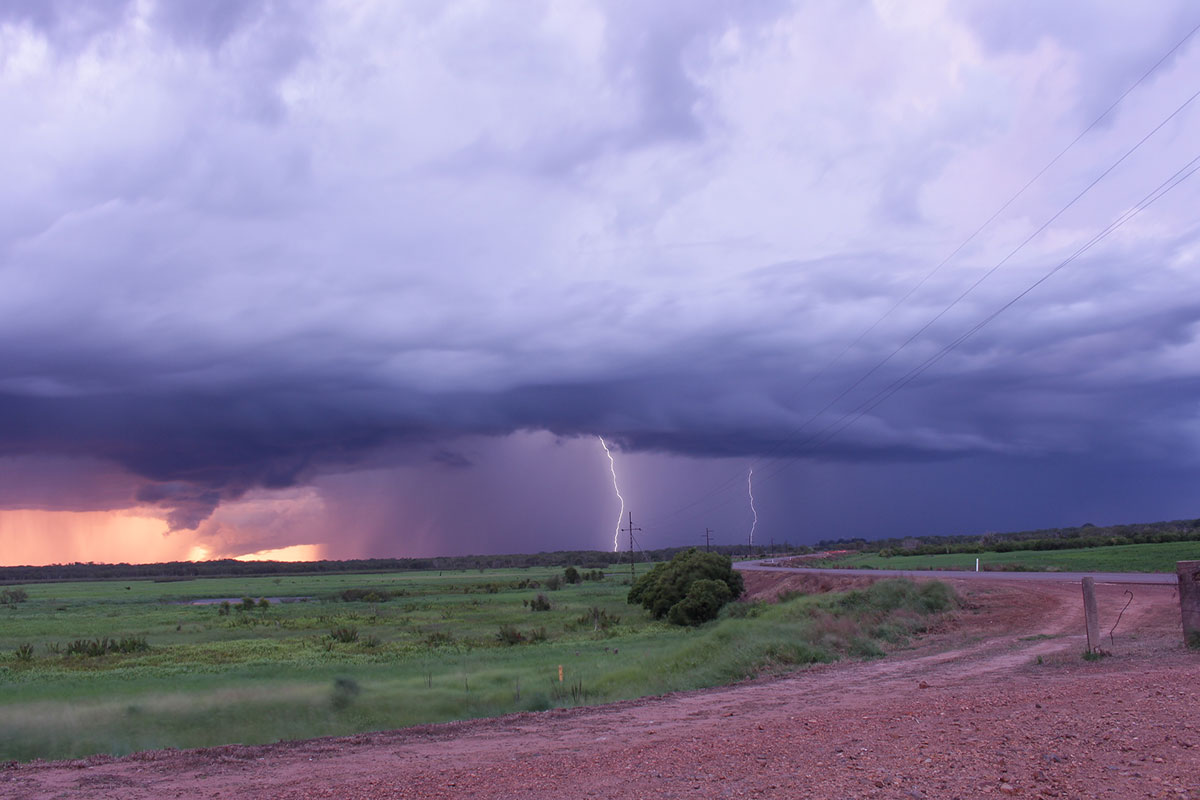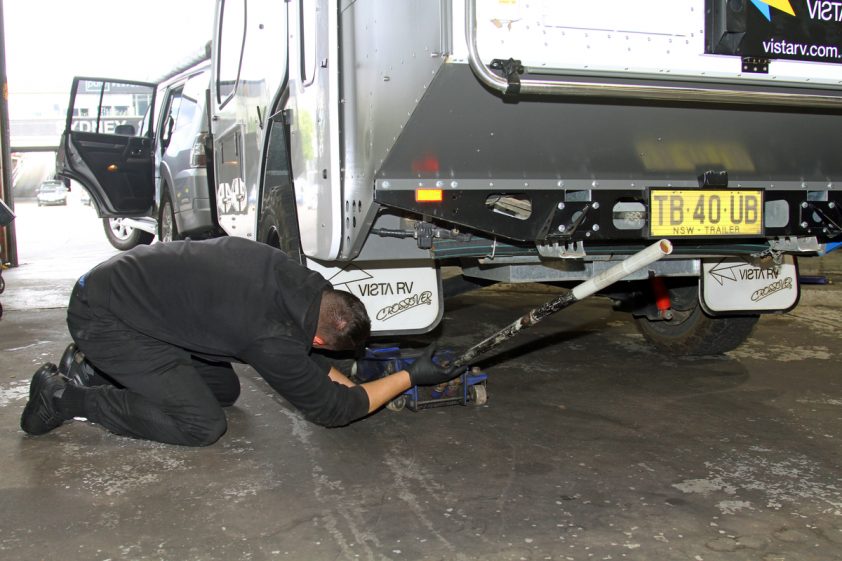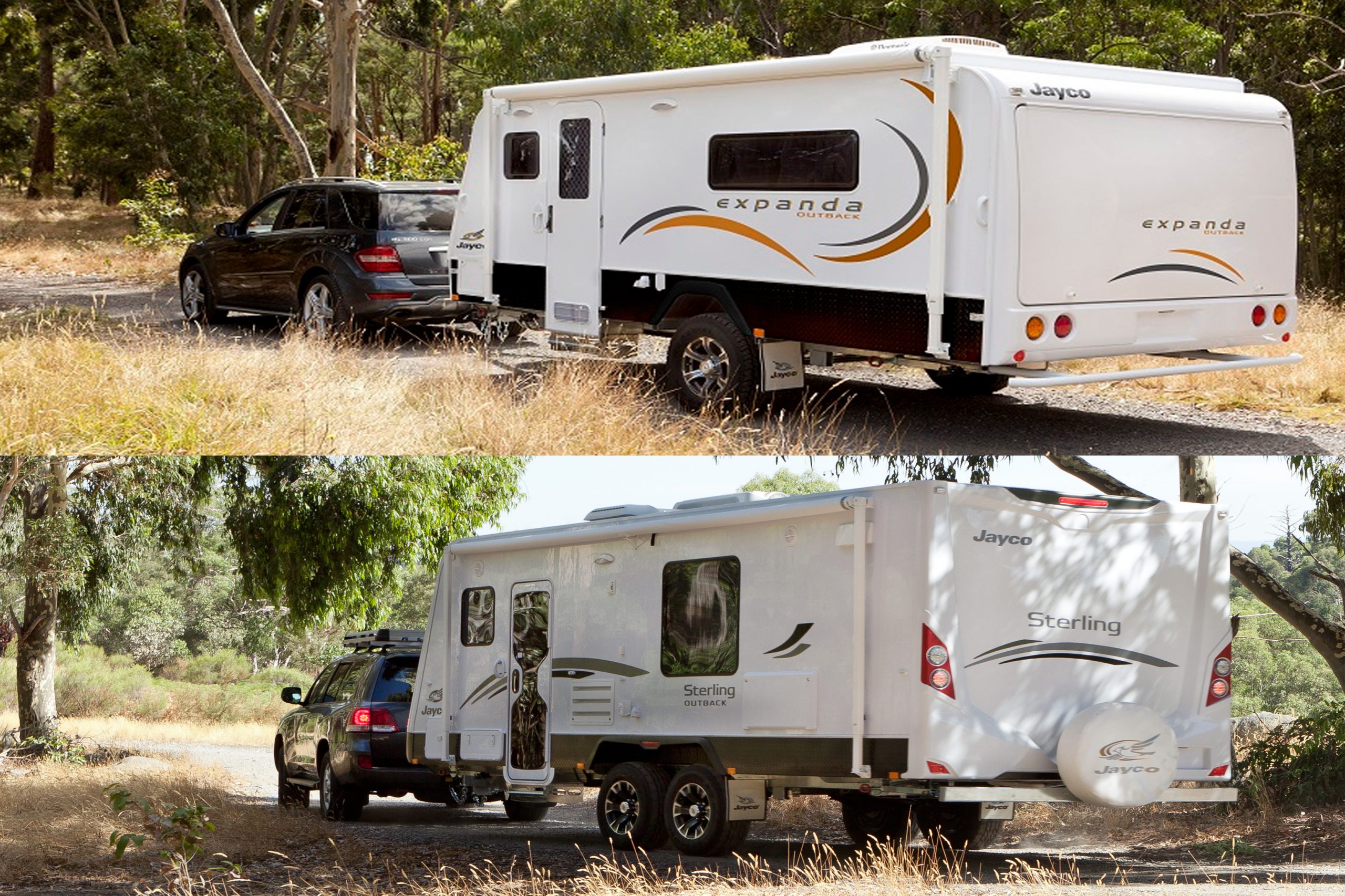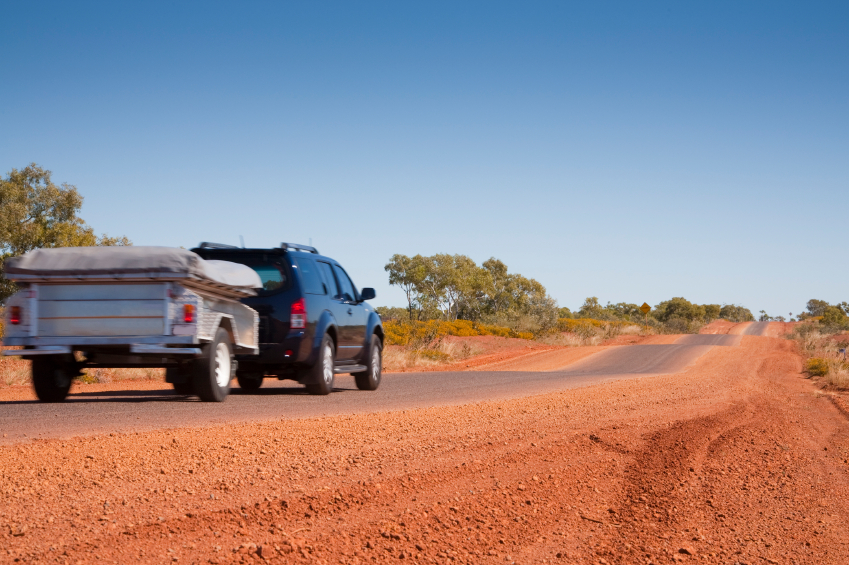The weather can have a habit of foiling our best-laid caravanning plans. Here’s how to cope when things take a turn for the worst.
The clouds roll in, there’s thunder, lightening and rain on the horizon. It’s time to think about how to protect yourself and your caravan from severe storms and cyclones. Here’s the advice you need.
1. ASK THE WEATHER MAN
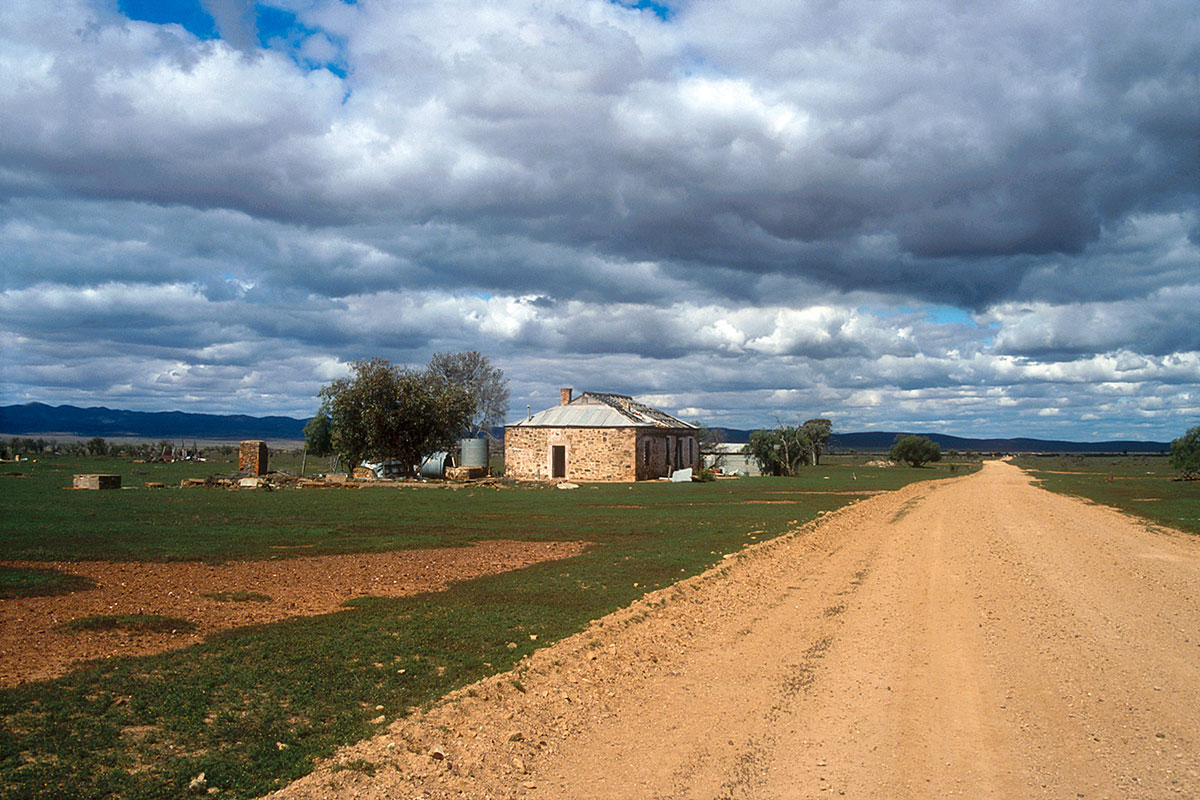
“The Bureau’s website is one of the most popular and comprehensive websites in the country,” says Neil Bennett, spokesman for the Bureau of Meteorology. Neil explains that caravanners can access weather information to help them plan their trips and potentially keep them safe from harm.
Neil says that the BOM has established websites in desktop and mobile versions as well as a mobile app to help travellers stay safe throughout the year. He says the BOM on-line resources include all of the information and weather warnings for the entire country. Neil says the App will geo-locate your position and provide a seven-day forecast for your phone’s position.
Tools like the BOM’s weather radar and consumer portable weather systems are worth keeping an eye on but are only helpful for forecasting two or three hours in advance.
“Once you are aware of a warning that’s when monitoring radar could become a very useful tool,” he says.
But Neil reckons other websites aside from the BOM also offer timely weather information, like Western Australia’s EmergencyWA.gov.au which collates information from BOM. What’s more, organisations like RACWA, RACQ and others provide text weather warnings to members.
2. SEEK LOCAL ADVICE
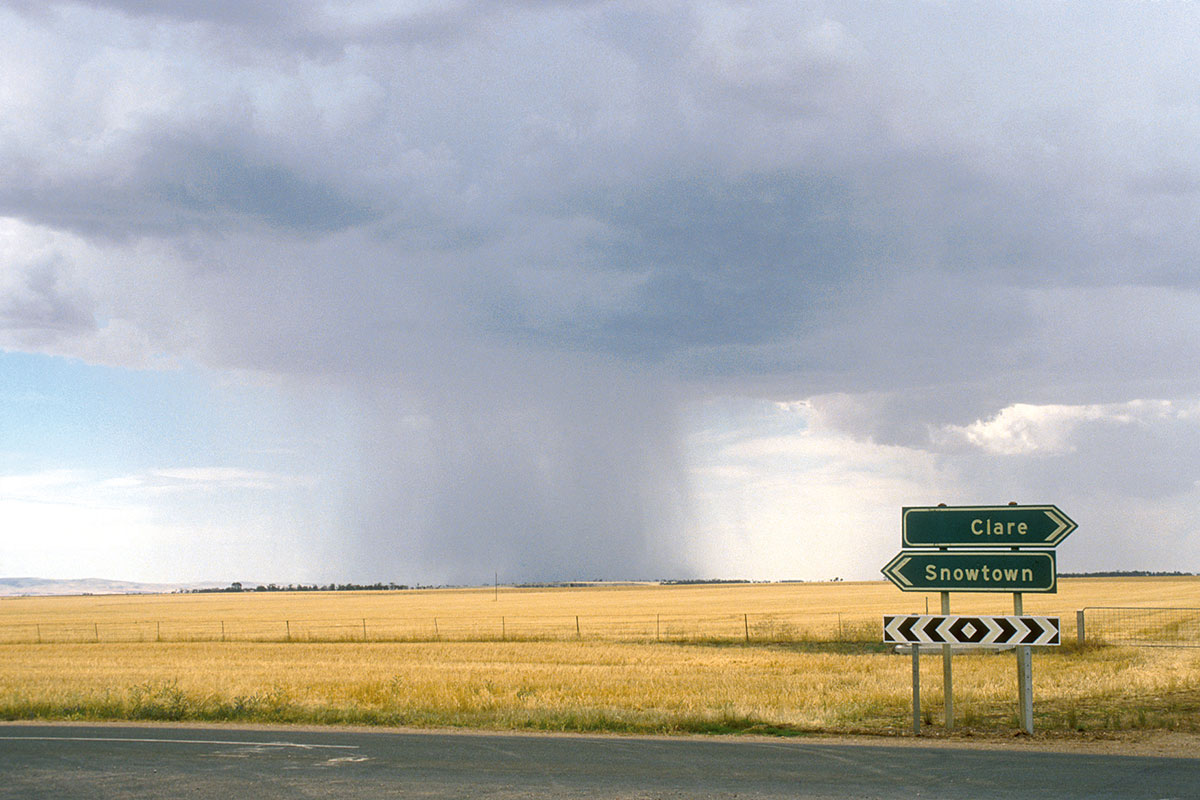
Beyond using on-line resources, Neil says gathering local knowledge can be a big help. For example, while travelling in the tropics it’s useful to know that the area that experiences the most cyclones anywhere in the Southern Hemisphere is between Broome and Exmouth.
It’s good to understand that cyclone systems or monsoon lows bring flooding, an important consideration especially in remote areas where roads aren’t sealed.
“It is very easy for those roads to quickly become impassable and if you’re towing a caravan that just adds to the problems,” Neil says.
RACQ’s Russell Manning agrees, adding, “If it’s flooded, forget it. If you have a caravan on the back – absolutely forget it.”
Russell agrees caravanners should always seek local advice, particularly police advice when travelling. He says police and roadhouse staff are useful sources of weather and road condition information.
3. SEEK INDUSTRY ADVICE
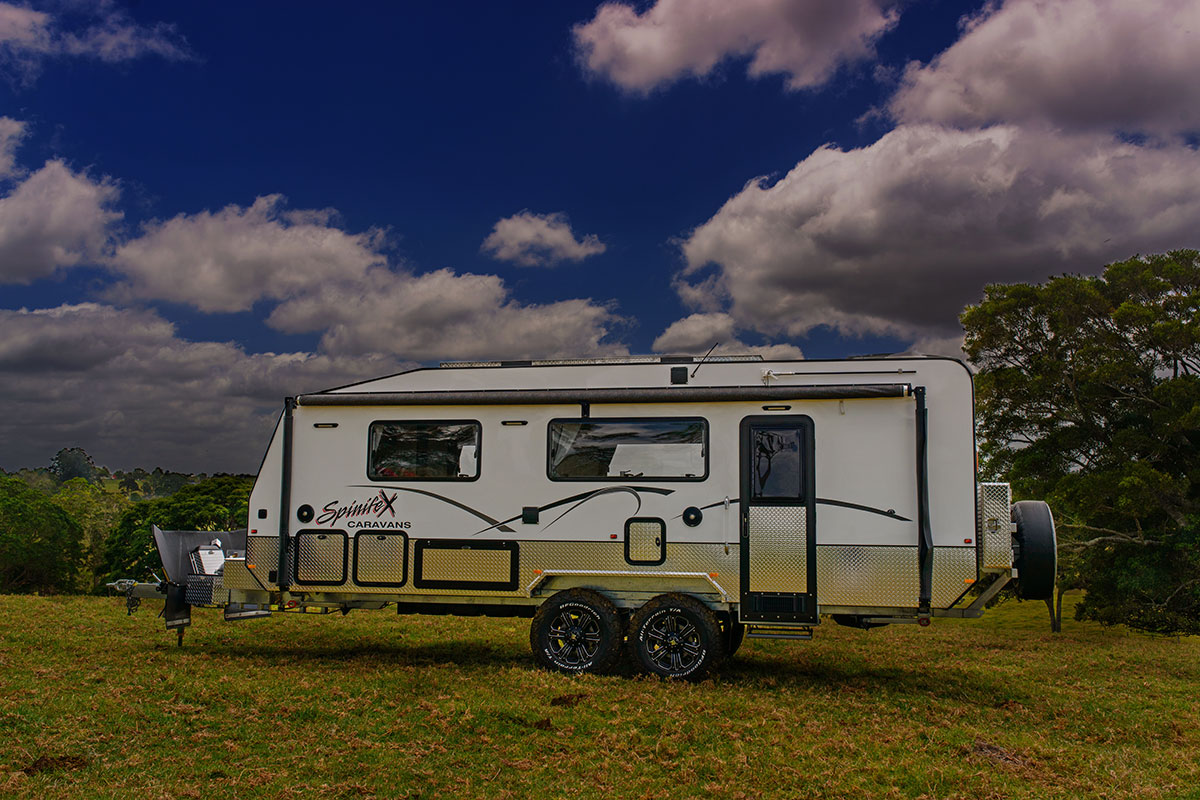
Caravan Industry Association Victoria’s Daniel Sahlberg thinks there’s more to planning a trip and avoiding bad weather than understanding meteorology and its effects. Being prepared, he says, means having vans serviced before heading off on a long trip and checking insurance policies are up-to-date. The latter is an important point considering weather damage claims are among the most prevalent insurance claims on caravan policies. Suncorp, including CIL, has incurred around 20, 400 claims over the last four years from 1 July 2012 to 30 June 2016. Those claims include hail, floods and storm debris damage.
Caravan Industry Association of Australia CEO Stuart Lamont recommends caravanners heed all warnings provided from emergency officials and caravan park operators, talk to the locals, check ahead for road conditions and never try to traverse flooded roads under any circumstances.
4. FIGHT OR FLIGHT
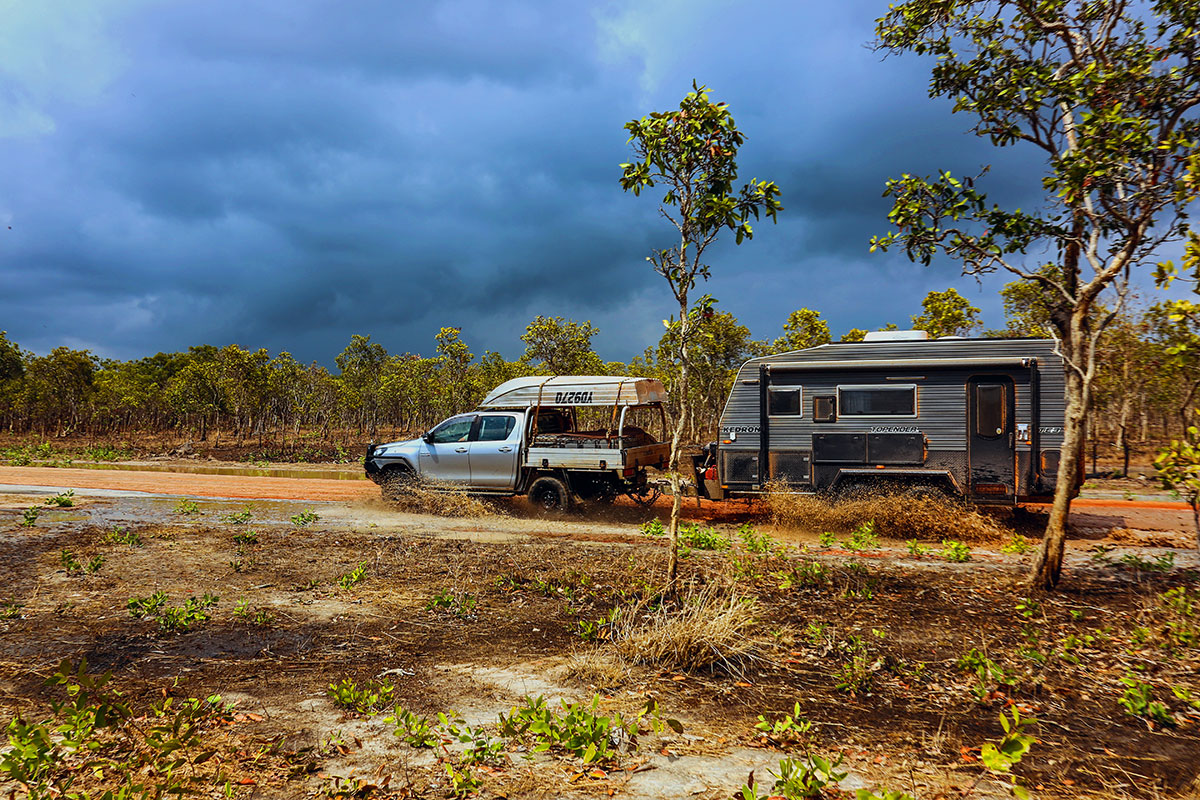
RACQ spokesman Russell Manning agrees. “Keep a close eye on what the weather is doing and if it looks like you are going to be in the firing line, get out of there,” he says.
Russell asserts it’s best to leave early, but the alternative is to get to a safe place and hunker down. Remember safety comes first and when a cyclone’s approaching you should know where to find an evacuation centre and, if it comes to it, evacuate early and be prepared to lock the caravan and go to a safe place.
According to the Fire and Emergency Services Department in WA, if you do decide to hunker down somewhere safe when facing an approaching cyclone, you should decide ahead of time what you will do with your caravan, how to tie it down and where you will go if a storm or strong winds threatens the area.
This applies to people staying in caravan parks, travelling with caravans or with caravans parked on their properties. What’s more, the department advises even if your caravan is securely tied down you should seek shelter when warned of very strong winds.
When securing a caravan you should tie down the chassis, the roof and then secure large objects too large to stow by bundling them together. In addition, turn off the gas, water and electricity, board up windows, lock the doors, block up the van and take it off the suspension, lower the van jacks to the ground to provide additional stability, tighten all tie downs and engage the handbrake.
5. OBSERVE THE WEATHER
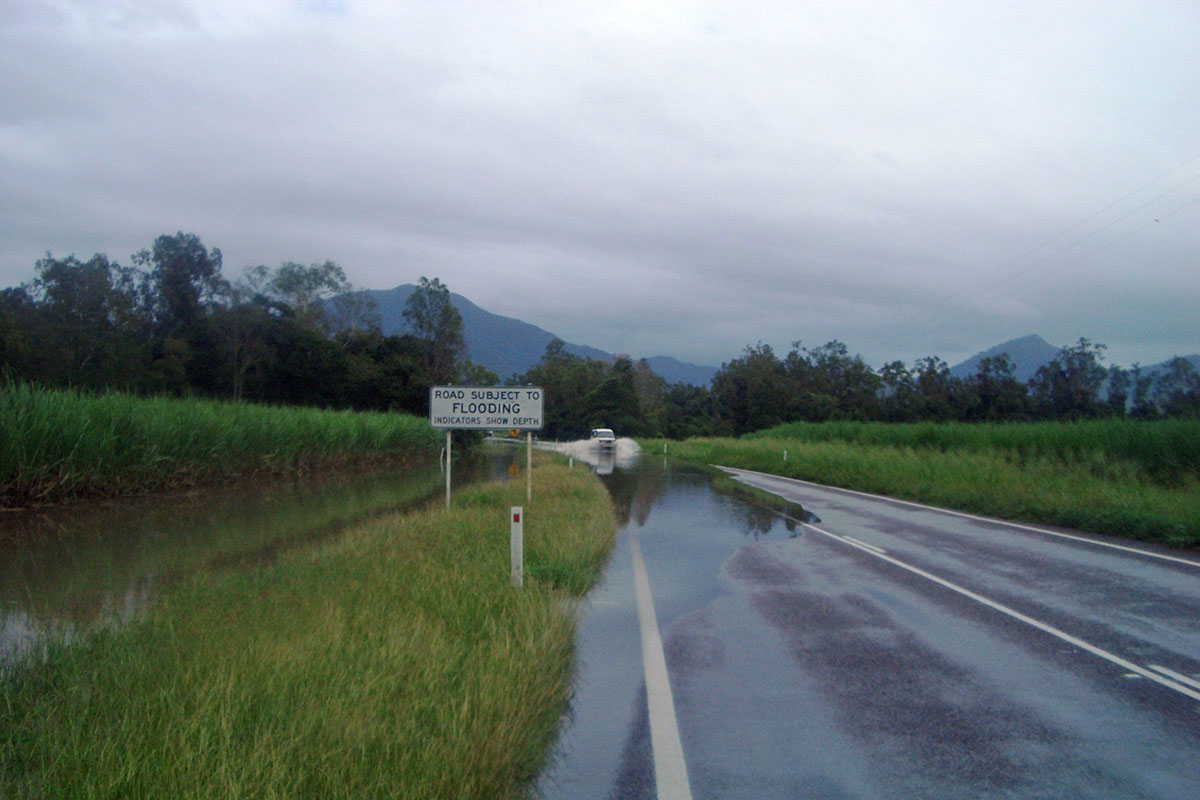
BOM’s Neil Bennett says portable weather stations allow you to watch trends. If you notice the pressure is starting to fall quite quickly, that’s a sign of an approaching low-pressure system. If you also notice the temperature drop rapidly and the wind picks up, that’s a sign that a thunderstorm is in the area. This is useful information if you don’t have radar coverage. After all, the storm that your weather observations are suggesting is around might be over the horizon.
Neil says the rush of cold air that comes out of the bottom of a thunderstorm when it’s active will push out in a circular pattern over a distance of up to 10km, causing the pressure to increase and the temperature to drop rapidly. That’s a sign that there is something nearby warranting caution.
Neil reckons one of the best tools for short-term weather forecasting is your own observation of the clouds.
“You awake in the morning and it’s still but very humid. You notice there’s heavy dew on the ground which seems strange, because it’s a summer’s day. As you are driving you notice the clouds are building and bubbling rapidly. That’s a sure sign that you’ve got thunderstorm development going on,” Neil says.
When it comes to building weather knowledge, Neil recommends listening to the ABC’s Country Hour. He says the depth of knowledge shared on the weather segment around lunchtime is worthwhile. It’ll help keep you safe when travelling in thunder, lightening or in rain.
6. CARRY THE RIGHT EQUIPMENT
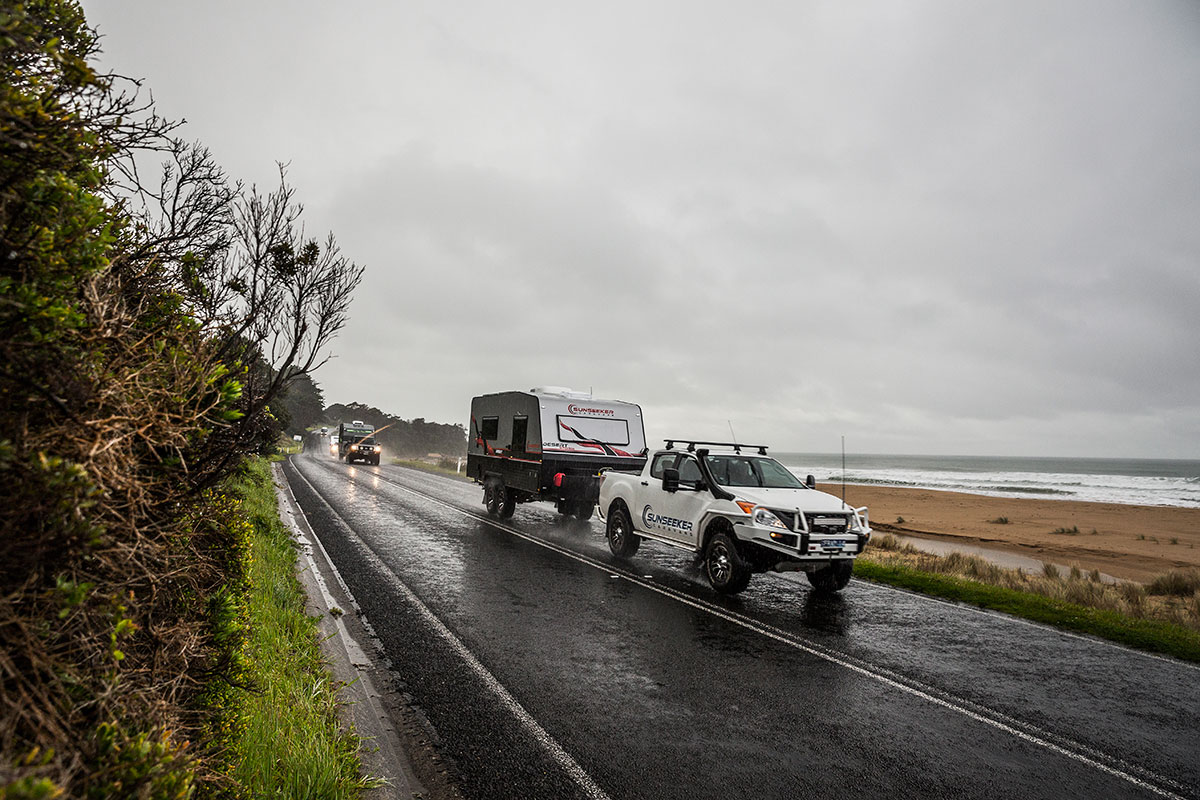
RACQ’s Russell Manning says that the first consideration when travelling in remote areas that may experience severe weather is to carry ample food and water. He says communication is key, which means carrying a UHF radio or Satellite phone, but ideally both.
Other useful gear includes either steel cables or 800kg breaking straps to tie down the van down during a cyclone and awning tie-down straps suitable for heavy storms or strong winds.
Russell says it’s vital to tell someone where you’re going to be when travelling in remote areas during a time of forecast inclement weather, including friends or relatives and even the police.

